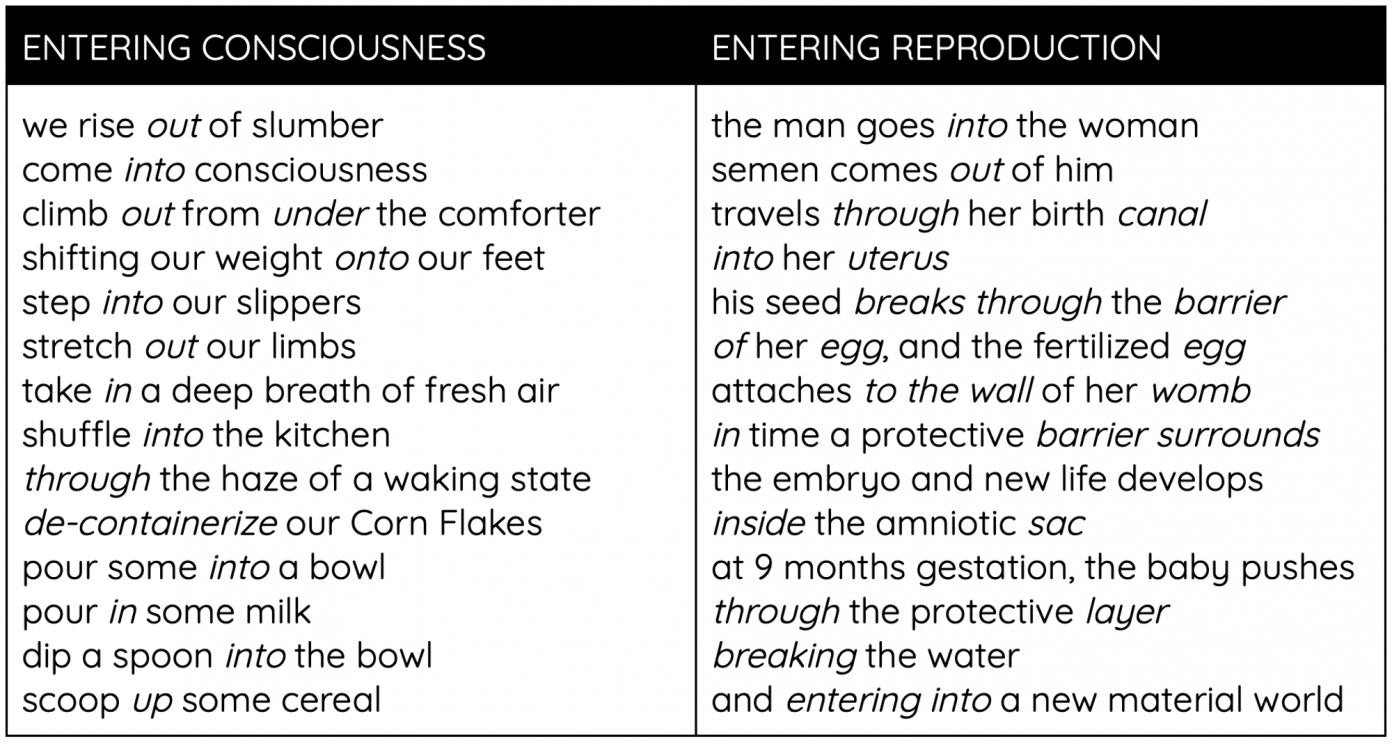Military Operations in Civilian Disguise: Bio-Nano Governance and Terms of Use for Humans 2.0 (1)
Abstract
Since government needs to be involved in the accumulation of capital to legitimate its activities, and since humans are, in the eyes of government, key resources, government needs therefore to be involved in activities that manage, control and increase the efficiency of these resources whilst at the same time fostering the spread of business.

History shows evidence of how the transhumanist movement has gained a foothold in society through government and business activities, in accordance with high-level military-intelligence forecasting and scenario planning, and how the global program may be viewed and understood as the only rational response to increasingly outdated humans who, save for the gift of high-tech bio/nano brain-chip upgrades, cannot compete against the machines.
These kinds of sentiments, wrong as they are, are reflected in language output, which represents the centre of our thinking. The present article introduces, therefore, aspects of cognitive science as a way of examining more closely how centres of power conceptualise human beings and their environments as containers to be managed and controlled by authorities, and how these conceptualisations appear in language, in policy, and in practice. We make the case that behind the theatre of government, electoral politics and manufactured global crises, transhumanist battle-plans have been consistently enacted in policy and in governance, such that “democratic processes” do little more than provide civilian cover for military operations.
Introduction
Official documents tell the story of a sustained, well-funded, and furtive military-intelligence campaign to transform the human being from a natural biological life-form possessing unalienable rights, agency, and sovereignty to a synthetically modified entity whose body and psyche are penetrated by the latest technological “enhancements”. Clever neologisms are, thus, needed to represent the imagined ontological states new to the human experience, to make these novel forms of existence acceptable in the ears and in the hearts of the submissive masses. The project begs the question: Are we really being parsed into totally new social categories as described in the Proteus papers?
One way to answer the question is to examine more deeply how language is used to legitimate practices of redefining humans and reengineering both biological and social systems. Since language is at the very centre of concept formation in humans, it represents a key area of understanding how it reflects popular thinking about how and why certain actions are being taken in the real world — how and why such absurd social policies, for example, are crafted and for what ultimate aim.
In many countries today, official language policies directly reflect the thinking of those in power re-conceptualising the female as something other than what she has been for millennia — the very nucleus of human reproduction. The patriarchy, as it is commonly known today, pushing upon populations the policies of dividing the female into her constituent parts for invasion, commodification, and financialisation have had to invent clever new names to effectively camouflage the larger social program of dissociating the natural woman from her immense womanly powers. If the human is to become trans-human, those innate powers of (re)production need to be subdued to make way for a world in which, according to a 2008 Proteus monograph:
“Lovemaking is no longer the only generative force; that honor will be shared by the technologies that create the singularity. The true unseen powers are not higher powers per se, but the source of ESIs’ gifts and the networked links that connect them to that source.”
To pave the social and economic path toward new artificial generative forces, new artificial linguistic categories (i.e. uterus-havers) are now under construction for the restructuring of the woman in our consciousness. The concept of the woman, known for millennia to be at the centre of various forms of social and cultural power, is being erased. In its place is the form of some ambiguous genderless other — fully stripped of her feminine charisma, faculties of reason, emotion and allure along with her additional powers of creation — the very crux of the long unsolvable problem for elites engaged in the work of reengineering the social world. Explaining the depraved logic of this official top-down assault against the body and the reasoning requires a pathology that can trace to its roots the kind of debased thinking now pervasive across the world.
For help in assessing the claimed necessity of recasting the human female into these new social and biological molds, we draw upon the work of George Lakoff and his classic argument which bolstered, at the time, ongoing research in cognitive science. In Women, Fire and Dangerous Things (1985), Lakoff elaborates a fascinating aspect of human ability to process the plethora of sense data we encounter every moment of our lives and how we, thus, conceptualise what these data mean and how we might recognise and navigate the complex social world, survive and thrive.
“Categorization”, observed Lakoff, “is automatic and unconscious, and if we become aware of it all, it is only in problematic cases”, such as when politicians seek to rationalise and legitimate policies aimed at dispossessing people of their natural rights and abilities to reproduce their lives. Humans create mental classifications for the aspects we detect and perceive, and so our very words reflect the categories we put aspects and concepts into. In socially conditioning radical new beliefs and behaviours for a new dehumanised economic order, the trick is to re-engineer norms and concepts so thoroughly that only a new synthetic form of thought and speech will follow and become widely recognisable and acceptable — the default lingo unquestionable.
Theorising the Transhugenderman Category

Why, for thousands of years, were only men eligible to compete in certain sports and women in others? It was to the eye of reason and the principles of fairness that our forebears acknowledged key differences between the two genders — wo/man. One theory, in particular, has helped researchers grapple with the complex processes of forming common sense conclusions drawn from extrapolated sense data. Prototype Theory describes the sort of thinking that informs our decisions for how we go about categorising the multiplicity of natural phenomena we encounter.
The various taxonomies in the sciences, for example, are the result of human perception of objects and behaviours — such as reproduction — and our tendency to consider and categorise these phenomena. Theorists such as Brent Berlin, Paul Kay, Eleanor Rosch, Barbara Lloyd, Eugene Hunn, Carolyn Mervis, Barbara Tversky and others have described an important level of human interaction with and recognition of the external environment located in gestalt perception, mental imagery, and motor movements. At this level of perception, we function most effectively in dealing with discontinuities in our surrounding environment. So, it is easy to recognise, for instance, when one man is sufficiently equipped to compete fairly against another in the octagon.
Over the past millennia, humans have had little difficulty recognising patterns and discontinuities in the various strengths and weaknesses exhibited in both genders, and so this basic level of cognition helped to clear the groundwork for the roles humans naturally adopted in civilising communities, cultures, societies, and landscapes. We can generally recognise outward differences across ethnic categories, but another level down in perceptual acuity is considerably more complex. The difference between someone born and raised in Seoul, for example, and someone born and raised in Jeju is not so easy to determine at first glance.
As the theory goes, our basic-level gestalt perception isn’t adjusted for easily recognising such key differences at lower levels. This makes sense if we consider the origin and development of the scientific method, itself, as a systematic effort to discern clearly what is accessible to observation. Overt discontinuities in otherwise predictable patterns of behaviour trigger deeper levels of scientific inquiry (if the science has not been corrupted and stifled by the promise of favour or material profit). Lakoff argues that studies of categorisation at the basic level suggest that human experience itself is, at this level, structured pre-conceptually. It is why we can so easily see discontinuities and patterns of discontinuity at the basic level but need more time, careful observation, and study — with better tools and laboratory techniques — to even begin to notice more complex patterns and discontinuities at the lower level.
The naked eye alone would be useless to the epidemiologist grappling with what appears to be apparent cause-and-effect connections between covid injectable gene therapies, for instance, and the shocking precipitous decline in global rates of fertility. In fact, the new injectable mRNA technology remains largely fixed — due to the dominant corporate media system — in the basic-level category for “vaccine” precisely because of the decades of background conditioning in the culture and the aggressive marketing that directs public consciousness — fusing the technology with all the positive signs and symbols signifying the sterile work we imagine, and expect, in clinical immunisations. In much the same way, the naked eye alone has proven increasingly incapable of helping observers identify the discontinuities that had, for millennia, distinguished men from women in a culture nowadays swayed by the systematic top-down operation fusing and, thus, erasing both with “gender-affirming care”.
Consider, too, the difficulties in accurately assessing the signs of other serious medical conditions disguised by ordinary symptoms of, say, indigestion. Overt signs of dyspepsia that persist and defy treatment may, in fact, camouflage a cancerous war against the pancreas. A deeper examination of the root cause of persistent symptoms with an MRI will bring the physician closer to understanding the gravity of the patient’s condition. Furthermore, other related concepts of war, into which the basic-level conceptual category is filled, tend to contain images typical of conventional weapons: bombs, bullets, bayonets, missiles, and jet fighters to name a few. The weapons of a war fought on a battlefield contain all the conventional signifiers we imagine when warfighters strive against an enemy invader. The stealth weapons of a transhumanist war against humanity, however, are hardly conventional and, thus, exceedingly difficult to recognise without appropriate laboratory tools and techniques.

Categories for Herding and Culling
In a world where the value of bodies, brains, and bloodstreams is constantly weighed against the demands of the free market and the financialization of everything, who has the time for such activities as deeper independent studies? The attention of casual corporate news consumers captured by the voices in the mainstream echo chambers confirming their biases are already over-burdened. Discerning the key differences, for example, between the formation of salt crystals in blood samples and the apparent self-assembly of nanostructures exposed to electromagnetic fields requires study, some knowledge of nanomaterials, intracorporeal networks, the plans of the transhumanists, and historical context well beyond what corporate media offer.
Distinguishing these differences requires some knowledge of the larger story of how agencies of power and authority have taken liberties with members of the “human herd” and subjected women — and men — surreptitiously to various biotech injections, chemical adulterations, and genetic manipulations. It is likely why the contemporary war on women and its sophisticated weapons are not so easily recognisable. Complicating the general effort to recognise this war are those caught in states of emotional agitation who are less likely to focus on lower-level patterns of discontinuity. Furthermore, they likely have not yet formed from their perceptions the basic-level categories for such novel forms of warfare.
Since the emergence of the covid narrative, the state-sponsored campaigns of fear and loathing and dehumanisation, launched across the entire globe, have been integral to coordinating programs of successful cultural conditioning. Many members of the human community, fearful and continually agitated by the practices of social engineering, now put themselves in the category of synthetic objects ever ready for modification rather than natural subjects possessing agency and sovereignty. To them, therefore, maintaining personal bodily integrity means little. Even many feminists — long advocates of a woman’s right to choose what goes into her body — have handed control over their bodily integrity and autonomy to those pushing mandates and “upgrades”. Perhaps, this level of acquiescence isn’t so surprising in this day and age.
In his book, The Body in the Mind, Mark Johnson makes a compelling argument for the embodiment of certain kinesthetic image schema. Our experiences, he argues, are structured in profound ways prior to, and apart from, our mental processes of conceptualising. Johnson argues that image schema are themselves constructed by certain recurring patterns of bodily experience. These existing concepts, he notes, may impose upon our perceptions further structuring of what we experience, but basic experiential structures are present regardless of any such imposition of concepts. This may seem confusing or hardly worthy of our attention, but if we consider language itself, we can see the extent to which pre-conceptualisation is tacitly baked into verbal output.
One example among many that Johnson expounds is the container schema. We conceptualise containers as having boundaries with exteriors and interiors. We handle containers, put objects in, and dump objects out. Containers can also conceal from external view details of their contents, so the mystery of what might be in them can trigger fear or confusion. Consider, over the preceding four years (as of this writing), how perfectly ordinary bodily functions have been reconfigured in our consciousness — the random cough or sneeze having been remade into a kind of biological weapon to fear. The conceptual image of a container is the most basic-level distinction between our perception of what’s in — and what’s out. If we understand our bodies as containers, it is easy to see how we conceptualise the processing of all sorts of chemicals, foods, vapors, and liquids and even ideas about ourselves in the larger world framed always as a closed container. In the extraordinary container that is our own body, we ingest, digest, process, excrete, exhale, expel, eject, and deliver. Perfectly natural practices now being pitched as detrimental to the “sustainability” of the container itself.
As Johnson points out, our understanding of our own bodies as containers pales in comparison to all the other daily experiences we tacitly know and engage with in terms of the container. What follows are numerous implicitly understood in-out orientations that occur in routine states of arousal to conscious awareness and to reproduction — that amazing natural process that should come under the control of the transnational Giants invested in the Revolution.

To what extent can we understand practices of privatisation and investment in the Earth as a closed container that needs to be protected from the menace of natural lifeforms that gestate and spawn more unwanted future carbon footprints? To the Giants who appear self-justified and obliged to poke, prod, prick, inject, and drive the “herd” into psychic spaces of obedience to the demands of a new order, the language ought to reveal something deeply profound about how the owners conceptualise.
Earth as a Closed Container Whose Content Needs to be Controlled
Precisely what motivates contemporary claims that Earth is over-populated and that populations need to be reduced? Most people point to Thomas Malthus, the 18th century economist and cleric, who was moved to posit that, “The power of population is indefinitely greater than the power in the Earth to produce subsistence for man”. Others simply parrot a contemporary reconstitution of the Malthus proposition propagated by corporate media. Of course, Malthus offered the claim in the closing years of the 1700s when Earth’s population was in fact roughly the size of India’s today. Since its 1968 resuscitation by the Club of Rome and other eugenicists around the world have fuelled claims (enough to fill a book) that someone needs to do something about the rate of ever-rising populations. In Limits to Growth (1972), Secretary-General U. Thant dramatises in his epigraph the urgent need to curb births:
“…….the Members of the United Nations have perhaps ten years left in which to subordinate their ancient quarrels and launch a global partnership to curb the arms race, to improve the human environment, to defuse the population explosion [a wink and nod to Paul Erhlich’s hyperbolic Population Bomb?].
…….If such a global partnership is not forged within the next decade, then I very much fear that the problems I have mentioned will have reached such staggering proportions that they will be beyond our capacity to control.”
Of course, since Limits to Growth first appeared, the 1980s have come and gone, and the only significant shift — apart from the consistently renewed apocalyptic warnings issued every decade — has been in the main narrative: away from the Coming Ice Age and toward Global Warming. Today, others figures, like Sadhguru, WEF’s religious inspiration, simply continue offering up the eugenicist motto: “All the religious groups are against me because I’m talking about population: they want more souls on the planet; I want less”.
Implicit in these aspirations is the belief that drastic measures must be taken to regulate the power of women to cultivate in their wombs new lifeforms that will only add to these ever-rising numbers. After all, everyone knows that babies demand sustenance, and a crying child with an empty stomach is a constant reminder that the woman and the donor of the seed (man) need to come to terms with the brute force of the economics of cultivating offspring.
Hence, the propaganda campaign to promote neo-feudal economic arrangements (”You will own nothing and you’ll be happy”) simultaneously serves to agitate fear in men and women from engaging and investing in their natural birthright to reproduce. If women (“bodies with vaginas”) are the very centre of population and cultural (re)production, their eggs, according to the eugenicist logic, should ultimately come under the control of the state ever concerned about resource allocation and domestic production — a dictate of the command economy of Nazi Germany when “your body was not your own [and] it belonged to the national community [since] reproductive policy was a matter of state”. This goes especially so for the so-called stakeholders invested ideologically and monetarily in the “Fourth Industrial Revolution” fretting over who could ultimately gain control over their investments and all the other natural resources they appear to believe are rightly theirs.
Cyborg Societies: Transhumanist Designs on Governance
With a sharper focus on such contemporary social engineering efforts to conceal, debase and replace what it means to be human, Proteus’ visions for post-human societies, seem less remote. Consistent with Proteus’ projections, the linguistic mechanisation of that most profoundly awe-inspiring feat of biology — giving birth and creating life — parallels work in academic transhumanism under which humans are morally and legally indistinguishable from their non-human counterparts. Academic concepts such as ‘post-human dignity’ and arguments against human rights as a distinct category, serve to relegate human beings to the same status as technological products, or transhumanist merchandise, adorned in the discourse of bioethics. Thus, in keeping with a long corporate tradition of pushing the technological envelope and upgrading technologically outdated stock, tweaking any beings who just “happen” to be human, and turning them into Proteus ‘Freaks’, is a logical next step.
Moreover, to dismiss Proteus’ forecasts for Humanity 2.0 requires ignoring an extensive dossier of supporting official documents, with an overt theme of marketizing, subduing and, ultimately, discontinuing an increasingly outmoded (human) product. The landmark DoD-backed NBIC ‘futures’ report at the turn of the millennium, for instance, like Proteus’ 2008 monograph, made clear that transhumanist “enhancements” were not intended for military personnel alone.
While the Proteus monograph advised that, “the first waves of ESIs” (aka cyborgs) would likely emerge from military research labs, the earlier, overarching NBIC project always envisioned a broader societal bio-nano-info-cogno future, with the potential to “change our species”. It is hardly any wonder why the dominant myth-makers in Hollywood would produce a deluge in recent years of superhero trans-humans emerging from secret military-industrial research labs.

As part of the evolutionary pathway towards a changed species and society, the expectation of the NBIC project was that, by 2020, electronic devices would become sufficiently advanced for civilian populations to experience a “significant shift in our view of the dividing line between what is natural and what is man-made”. That fundamental shift in perception of the natural and synthetic was, in turn, anticipated to ease the societal path towards the merger of humans and machines.
ltimately, the human-machine hybrids of the future were cast in NBIC and subsequent official documents as serving not only national security purposes, but also commercial interests (described variously as ‘economic prosperity’, ‘wealth’, ‘competitiveness’, ‘e-business’, ‘the nation’s productivity’, ‘work efficiency’, ‘the entertainment industry’, ‘the tourist industry’, ‘new products and services’ and so-on), as well as medical and IT industries, and a perceived, unquestioned imperative for nations to pursue “technological superiority”.
Accordingly, via government, commercial, medical and educational avenues, the NBIC project and a plethora of subsequent-military intelligence reports foresaw for everyday citizens the same transhumanist “enhancements” slated for soldiers. These include genetic engineering, brain implants, brain-to-machine and brain-to-brain interfaces, engineered tissue, synthetic organs and cells, nano implants, and bio-nano electronics / molecular electronics. All of which enable virtual environments that could, with the help of bio-nanotechnology, “transcend the biological limitations of human senses and create a new human relationship to the physical environment”.
Indeed, as illustrated below, explicit references to civilian cyborg scenarios consistent with Proteus’ projections abound in military-intelligence reports, which are simultaneously peppered with policy and governance recommendations to turn the strategic visions into material reality. In those reports, a number of key themes emerge: Humans are expected to fall to the bottom of the social hierarchy; injections are a method of technologically transitioning human beings; certain transhumanist interventions are expected to become mandatory; governments should lead society-wide human augmentation efforts, and; governments and the private sector will partner in the whole endeavour, marching forth with ‘national security’ and ‘economic prosperity’ side by side.
In Human Augmentation: The Dawn of a New Paradigm (2021), for instance, the UK Ministry of Defence writes that human augmentation, which conceptualises “the person as a platform, a human platform ……. is relevant across society and Defence ……. Designer babies”, it says, may be “likely within the next 30 years”.
Societally, like the Proteus monograph of 2008, the 2021 MoD document foresees the emergence of social classes stratified by their ‘enhancement’ status. It says that:
“Human augmentation is likely to exacerbate inequality, and could lead to societal tensions. The wealthy are expected to be early adopters of human augmentation, and they could use their acquired superior abilities to entrench their status. In time this could lead to an elite overclass that could become genetically distinct from the rest of humanity, and leave an unaugmented underclass as relatively disadvantaged as the illiterate are in today’s societies”. Those who reject technological adulteration, moreover, “could be marginalised, or even persecuted”.
Nevertheless, the MoD report argues that “there may be a moral obligation to augment people” on certain grounds, such as in the name of “wellbeing” or protection from “novel threats”. (Consider the euphemistic linguistic shell game involving sanitising and eulogising language — such as ‘wellbeing’ or ‘protection’ — within which questionable transhumanist agendas can hide.) Regarding “novel threats” the document adds, “It could be argued that treatments involving novel vaccination processes ……. are examples of human augmentation already in the pipeline”. Given the date (2021), we wonder whether the MoD was referring to “novel threats” such as covid-19, and “novel vaccination processes” such as the bio-nano covid ‘vaccines’, which were purportedly designed to synthetically ‘augment’ (read adulterate) the human genome and immune system using synthetic RNA. The document continues, “The future of human augmentation should not, however, be decided by ethicists or public opinion ……. rather, governments will need to develop a clear policy position that maximises the use of human augmentation”.
Which, indeed, governments did do in 2021. Clear policy positions on ‘vaccine’ mandates maximised the use of gene-based injections to ‘augment’ human immunity. As advised by the MoD, public opinion and ethical due diligence were cast aside, with disastrous consequences. This confirms that democracy today is a mere husk, an artifice with which to distract and fool the population, while real power lies with the executive branch, enacting policies formulated on the basis of military intelligence.
Having already experienced governments maximising the use of injectable bio-nano technology under the auspices of covid, and the guidance of the WHO, with the WHO’s impending authority over nation-states, as forecast by Proteus, and its associated global power to unilaterally impose emergency governance, including bio-nano “health” requirements, we surmise that the WHO may be positioned to emerge as a leading source of policy that “maximises the use of human augmentation”.

Down the path of ‘augmentation’, in Cyborg Soldier 2050: Human/Machine Fusion and the Implications for the Future of the DOD (2019), The US Army DEVCOM and its co-authors write:
“Introduction of augmented human beings into the general population ……. will accelerate in the years following 2050 and will lead to imbalances, inequalities, and inequities in established legal, security, and ethical frameworks. Each of these technologies will purportedly afford some level of performance improvement to end users, which will widen the performance gap between enhanced and unenhanced individuals and teams.”
Such technologies should be backed by a “whole-of-nation” approach, the report recommends, while opposing narratives around them are to be countered.
Once again, a military-intelligence body is advising governments in ostensibly democratic countries to push transhumanist technologies (i.e. genetic and bio-nano technologies) upon their populations. When and how did DEVCOM, a US Army science and technology offshoot, whose 2019 Cyborg report was sponsored by the office of the third highest ranking DoD official, assume that authority? Is it relevant that since 2020 the deployment of gene-based bio-nano covid injections in both the US and Australia, supposedly on health grounds, was co-ordinated by military-intelligence bodies rather than health bodies?
Read the second part of the article
yogaesoteric
May 17, 2024
